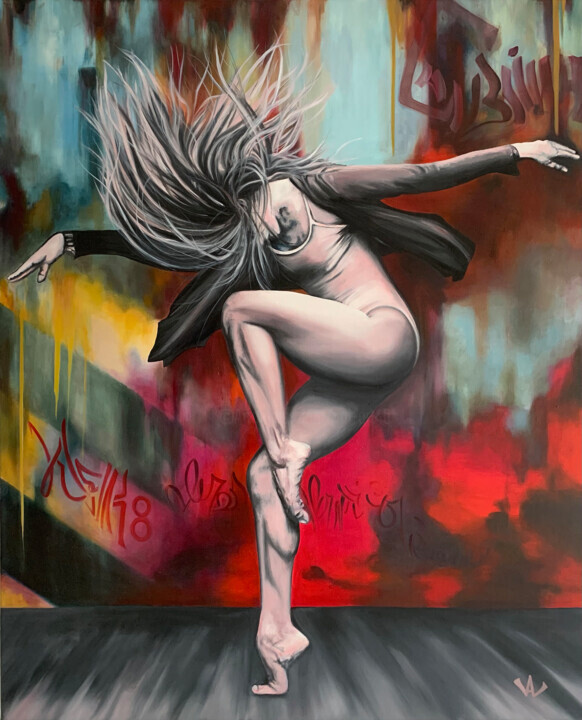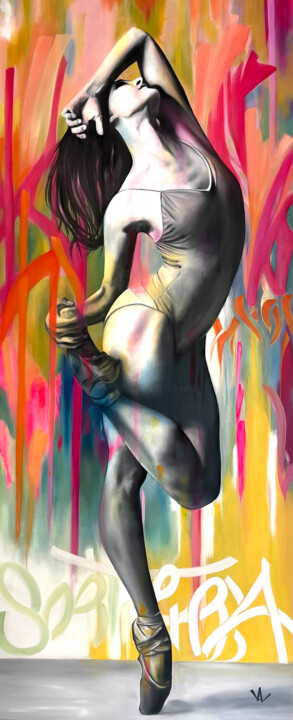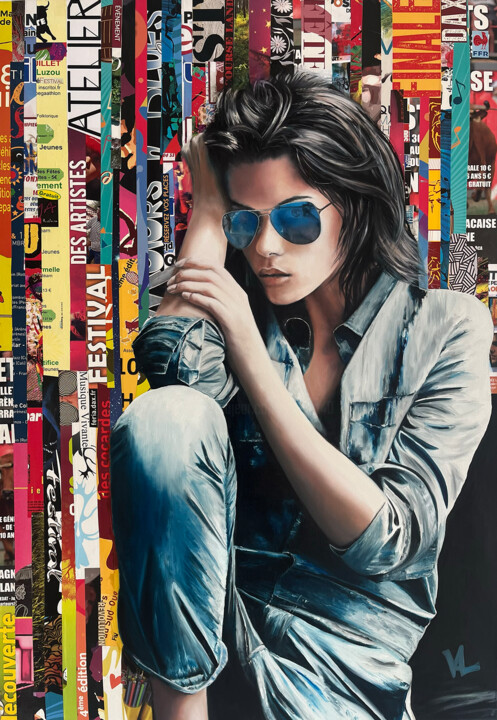What inspired you to create works of art and to become an artist? (events, feelings, …)?
The artistic environment in which I grew up formed the breeding ground for my passion for art. I always had pencils and paint at my disposal. In addition, I very quickly became addicted to the feeling of fullness that comes from painting.
What is your artistic background, the techniques and subjects you have experimented with so far?
I experimented a lot with techniques such as drawing, pastel, acrylic before choosing oil painting. When I started, landscapes and especially seascapes were my preference. I then gradually launched into the portrait, without leaving it for ten years.
What are the 3 aspects that differentiate you from other artists, making your work unique?
My portraits are always done in “black and white” tones. Even if I'm adding color glazes to it at the moment, the monochrome remains noticeable.
The association of these portraits with colorful abstract backgrounds of urban inspiration characterizes my compositions.
Realism and movement are also inseparable from my painting.
Where does your inspiration come from?
My inspiration comes, on the one hand, from black and white photography which I particularly like, and on the other hand, from urban art which has been part of my environment for many years.
What is your artistic approach? What visions, sensations or feelings do you want to evoke in the viewer?
Only aesthetics govern my approach. I just want the result to be beautiful, no more no less.
What is the process of creating your works? Spontaneous or with a long preparatory process (technical, inspiration from art classics or other)?
The creative process is spontaneous, almost instinctive. If an idea is not exploited immediately, I generally abandon it.
Where do you produce your works? At home, in a shared workshop or in your own workshop? And in this space, how do you organize your creative work?
I have a studio at home dedicated to painting but for a long time I painted anywhere and in all circumstances, alone or not, without silence or hubbub. When I paint, I'm like in a bubble and my environment doesn't matter.
How do you imagine the evolution of your work and your career as an artist in the future?
My immediate future depends on the transmission of my knowledge, the sharing of my knowledge. I have developed an activity as a visual arts teacher in which I thrive a lot and which enriches my work as an artist.
Artistically, drawing could carve out a place for itself alongside painting, a rough drawing in black chalk, very spontaneous.
What is the theme, style or technique of your latest artistic production?
I remain faithful to the portrait and the drawing of the body in movement as well as to the oil painting which gives me a lot of satisfaction.
Can you tell us about your most important exhibition experience?
I recently had the chance to be represented by a gallery specializing in international fairs. It allowed me to exhibit in the United States, Canada, Asia, Europe too: An unexpected springboard that opened many doors for me.
If you could have created a famous work in the history of art, which one would you choose? And why ?
I would choose a work by Edgar DEGAS, a dance scene with a chiaroscuro so well mastered by the artist. I would quote "the dance school" or "the 3 dancers" and so many others...
If you could invite one famous artist (dead or alive) to dinner, who would it be? How would you suggest he spend the evening?
I could propose to Pierre August RENOIR to leave his guinguette for a weekend to participate in a Féria in my region of the South-West. He should like it!






 Olimpia Gaia Martinelli
Olimpia Gaia Martinelli












